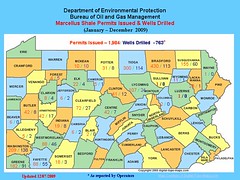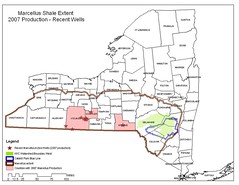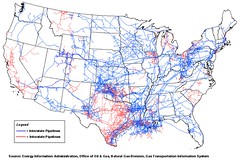• Jackson said the EPA would resume a process in which agency scientists issue "staff papers" outlining options for policymakers to consider in establishing air-quality levels for ozone, particulates, lead, carbon monoxide, nitrogen dioxide, and sulfur dioxide.
• Jackson also "reaffirmed" the critical role of the congressionally mandated Clean Air Scientific Advisory Committee (CASAC), a panel of outside scientists, in helping the agency make sound scientific decisions on air quality.
...Jackson's reversion to earlier regulatory practices was seen by environmentalists as part of a wider campaign by her and the Obama administration to hew more closely to scientific evidence when regulating the environment in all areas.
In a letter yesterday announcing the changes, Jackson said it was "essential that the best science and the greatest transparency inform air quality standards that prevent illness and save lives."
She added that the changes "will help us bring greater rigor and openness to our standard-setting process and improve the scientific basis for our standards."
The moves ... [herald] the reversal of a steady decline under the Bush administration of the influence of hard science in setting air-quality standards.
Traditionally, the "staff paper" process was rigorous, bluntly expressing the opinions and conclusions of the EPA's scientific staff on what levels of pollutants they consider safe without undue regard for cost and industry considerations.
"This is very good news," said John Balmes, a California physician who studies ozone and served on the panel when the EPA under George W. Bush set ozone levels in 2008.
Balmes was highly critical of the decision and testified before Congress in 2008 about how the decision ran contrary to widely accepted science and the need to reinstate the staff paper.
"Politicos in the Bush administration wanted to do away with the staff paper because it gave them less opportunity to maneuver," Balmes said.
Jonathan Samet, who now chairs the seven-member science panel, welcomed the changes.
"It's a strong reaffirmation of the importance of the science committee," said Samet, who teaches at University of Southern California. He said the changes would guarantee a more open process, adding that how the EPA made some previous decisions was not clear to the public.
...
"It is just common sense to let these scientists again play a key role in shaping our nation's air-quality standards," said Sen. Thomas Carper (D., Del.), chairman of the Environment and Public Works Committee's subcommittee on clean air and nuclear safety.
The restoration of the staff paper and support for the science panel come at a critical time in the review of the criteria for air pollutants.
As part of the Clean Air Act, the EPA must review and set safe levels every five years for six pollutants: ozone, particulates, lead, carbon monoxide, nitrogen dioxide, and sulfur dioxide.
The pollutants can be dangerous at high levels and are commonly found in the ambient air across the country.
To help make those decisions, Congress established CASAC to advise the administrator on setting safe levels.
Currently, reviews for nitrogen dioxide and sulfur dioxide are underway, said Balmes, who sits on both review panels.
Balmes said that science panel members in April were supposed to review the derided policy paper for setting nitrogen oxide levels, but the meeting was canceled.
"That was the first sign to us that they were going to change things," said Balmes said.
John Walke, the director of the Natural Resources Defense Council's clean-air project, said the changes greatly diminished the role politics and power can play in interfering with science.
"The bottom line is, it will ensure more protective clean-air standards for the public," Walke said.
DEMAND ACCOUNTABILITY!



















No comments:
Post a Comment